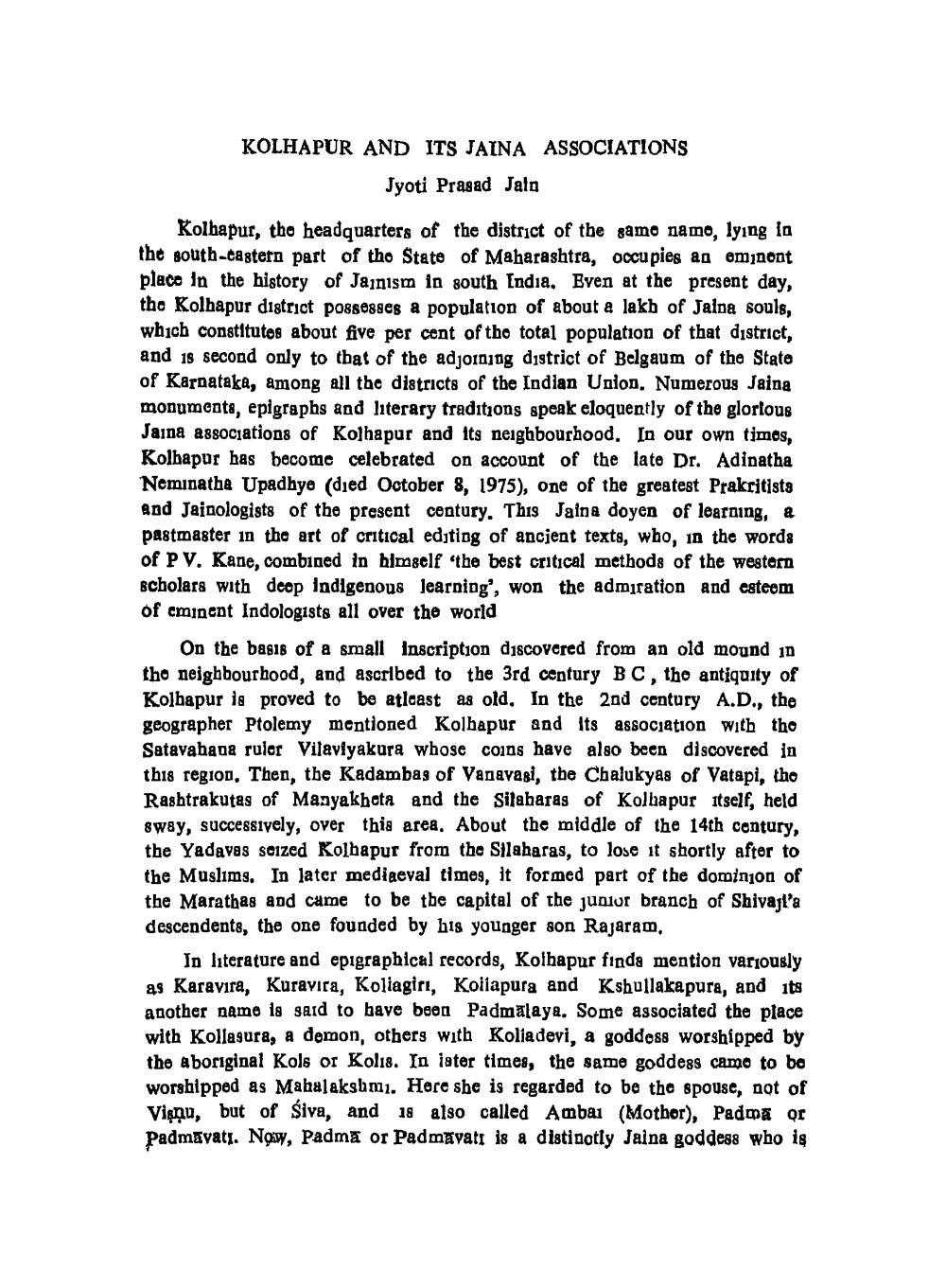________________
KOLHAPUR AND ITS JAINA ASSOCIATIONS Jyoti Prasad Jaln
Kolhapur, the headquarters of the district of the same name, lying in the south-eastern part of the State of Maharashtra, occupies an eminent place in the history of Jainism in south India. Even at the present day, the Kolhapur district possesses a population of about a lakh of Jalna souls, which constitutes about five per cent of the total population of that district, and is second only to that of the adjoining district of Belgaum of the State of Karnataka, among all the districts of the Indian Union. Numerous Jaina monuments, epigraphs and literary traditions speak eloquently of the glorious Jaina associations of Kolhapur and its neighbourhood. In our own times, Kolhapur has become celebrated on account of the late Dr. Adinatha Neminatha Upadhye (died October 8, 1975), one of the greatest Prakritists and Jainologists of the present century. This Jalna doyen of learning, a pastmaster in the art of critical editing of ancient texts, who, in the words of PV. Kane, combined in himself the best critical methods of the western scholars with deep Indigenous learning', won the admiration and esteem of eminent Indologists all over the world
On the basis of a small Inscription discovered from an old mound in the neighbourhood, and ascribed to the 3rd century BC, the antiquity of Kolhapur is proved to be atleast as old. In the 2nd century A.D., the geographer Ptolemy mentioned Kolhapur and its association with the Satavahana ruler Vilaviyakura whose coins have also been discovered in this region. Then, the Kadambas of Vanavasi, the Chalukyas of Vatapi, the Rashtrakutas of Manyakheta and the Silabaras of Kolhapur itself, held sway, successively, over this area. About the middle of the 14th century, the Yadavas seized Kolhapur from the Silaharas, to lose it shortly after to the Muslims. In later mediaeval times, it formed part of the dominion of the Marathas and came to be the capital of the junior branch of Shivaji's descendents, the one founded by his younger son Rajaram,
In literature and epigraphical records, Kolhapur finda mention variously as Karavira, Kuravira, Kollagiri, Kollapura and Kshullakapura, and its another name is said to have been Padmalaya. Some associated the place with Kollasura, a demon, others with Koliadevi, a goddess worshipped by the aboriginal Kols or Kolis. In later times, the same goddess came to be worshipped as Mahalakshmi. Here she is regarded to be the spouse, not of Viņu, but of Śiva, and 18 also called Ambai (Mother), Padma or Padmavati. Now, Padma or Padmavati is a distinotly Jaina goddess who is




